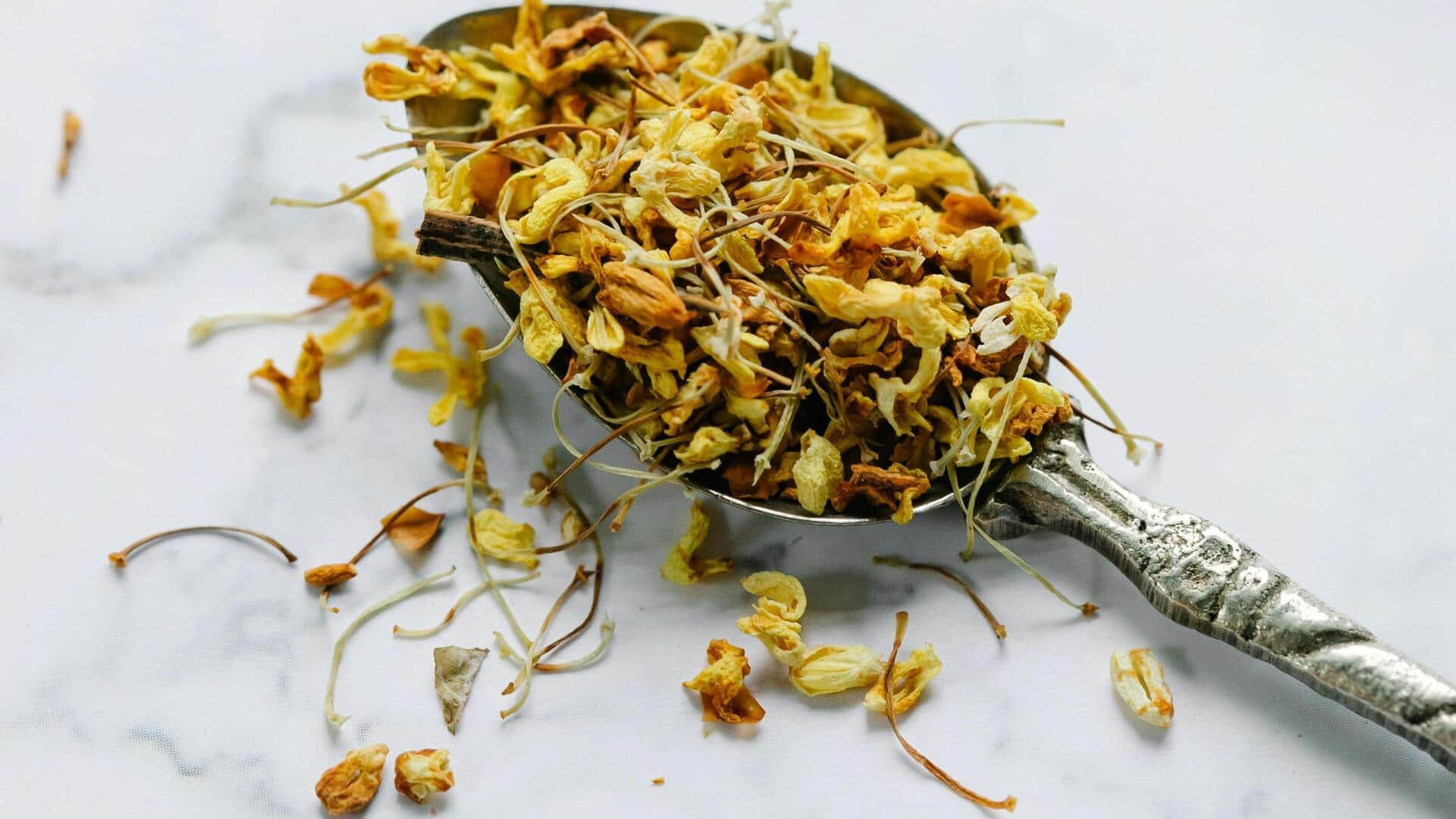
Why everyone is adding safflower petals to their food
What's the story
Safflower petals, the bright-colored flowers of the safflower plant, are slowly becoming a kitchen essential. Famous for their versatility and health benefits, these petals can be used in a number of culinary applications. From adding color to your dishes to providing a mild flavor, safflower petals are being used in kitchens across the globe. Here's how you can use them.
Salad boost
Enhancing salads with safflower petals
Safflower petals can be a great addition to salads, giving them a colorful touch. The mild taste of the petals goes well with greens and other veggies, without overpowering them. You can sprinkle some fresh safflower petals on top of your salad before serving it, and it will make the dish look more appealing and add a subtle hint of flavor.
Tea infusion
Safflower petals in herbal teas
Safflower petals are also commonly used in herbal teas for their soothing properties. When steeped in hot water, these petals release their natural essence, creating a light and refreshing drink. This tea can be enjoyed hot or cold and is often appreciated for its potential health benefits, including aiding digestion and promoting relaxation.
Culinary use
Cooking with safflower petals
In cooking, safflower petals can be used as an ingredient in various recipes. Their delicate texture makes them suitable for inclusion in soups or stews where they add both visual appeal and a hint of flavor. Chefs often use these petals creatively to enhance the presentation of dishes while keeping flavors balanced.
Health insights
Nutritional benefits of safflower petals
Safflower petals are rich in antioxidants, which are essential for fighting oxidative stress in the body. They are also rich in vitamins such as vitamin E, which is essential for maintaining healthy skin and eyes. Adding safflower petals to your diet can help you achieve better overall health by providing these essential nutrients naturally.